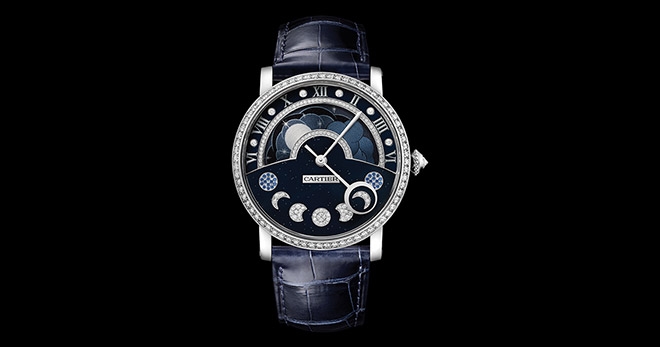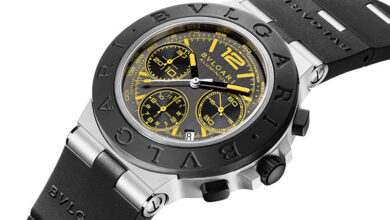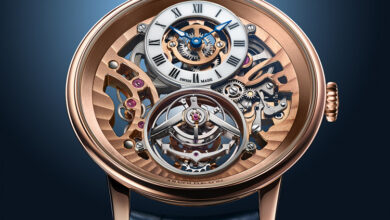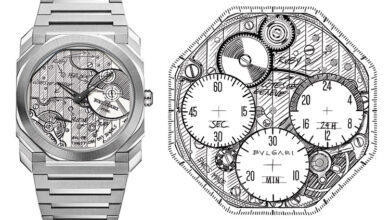Cartier Fine Watchmaking unfurls new heights to signature watches

Announced during the Salon International de la Haute Horlogerie (SIHH) 2016, Cartier has reached the strongest expression in its incredible craftsmanship through the release of signature watches that shine with outstanding character of Fine Watchmaking: The Astromystérieux, Skeleton, Crash, Rotonde Earth and Moon
The force of ambition and the spur of growth and expansion are the driving characteristics of Cartier Fine Watchmaking, which have led to the creation of forty five movements within less than ten years. The challenge was taken on in record time and bears unlimited prospects for the future. Today, this strong force of craftsmanship keeps the luxury Maison stand out with the launch of its signature watches that identify the common attributes that make it recognisably Cartier.
ROTONDE DE CARTIER Astromystérieux
Following the first Mysterious Hour and Mysterious Double Tourbillon models, this year’s edition of Astromystérieux achieves a new feat by combining the central rotation of an escapement with the axis of the watch’s hands.

This watchmaking tour de force is obtained through the juxtaposition of the movement’s components, assembled around four sapphire discs that animate the whole. The architecture of the 9462 MC calibre is every bit as ethereal in the organisation of its central axis, comprising the escapement, balance-wheel, gear train and barrel.
Unlike a conventional tourbillon, the Astromystérieux is distinguished by the central rotation of its mysterious flying cage over a period of one hour, enclosing not only the escapement and balance-wheel, but also the gear train and barrel. This cage is made up of a lower bridge in the form of a sapphire disc with a large diameter, together with two upper bridges, one of which holds the balance-wheel and the other the escapement, the gear train and the barrel. It is this rotating cage that indicates the minutes, thus dictating its rhythm of rotation. Thus with the Astromystérieux watch, Cartier once again proposes a ground-breaking and ingenious new interpretation of the tourbillon.
Moreover, a patent has been registered for the winding method of the Astromystérieux, based on the use of a sapphire disc in conjunction with the crown. Under this complex and unique system, the crown is only linked to the barrel when it is being wound.
Available in a 950/1000 palladium case with a 43.5 mm diameter, the Rotonde de Cartier Astromystérieux watch and its 9462 MC calibre movement have reinvented the “mastery of mystery” at Cartier. With this watch, Cartier takes even further the magic of the mysterious movement, one of the most emblematic signatures of its Fine Watchmaking collection since 1912.
ROTONDE DE CARTIER Earth and Moon
Presented this year in a pink gold version with its skeletonised Roman numerals, the Rotonde de Cartier Earth and Moon watch juxtaposes two indications: On one side, a terrestrial display showing local time and a second time zone indication represented by a 24-hour disc; on the other, a lunar display with inter-dependent tourbillon and on-demand Moon-phase indications.

It owes its name to the presence of its two sub-dials representing the Earth and the Moon, both cut out of polished meteorite stone. Through the open-work architecture of its dial and the unique complication of its movement, the Rotonde de Cartier Earth and Moon watch follows in the highest tradition of Cartier Fine Watchmaking.
The complications of the Earth and Moon watch make up a creative and vivacious universe in which the skeletonised Roman numerals underline Cartier’s dynamics for Fine Watchmaking.
ROTONDE DE CARTIER Day/Night Retrograde Moon Phases
The Rotonde de Cartier model lends its generously-proportioned dial to two of the most spectacular complications in Fine Watchmaking: the Day/Night indicator and the retrograde Moon Phases display. From left to right and dawn to dusk, the Sun and Moon follow each other across the upper part of the dial. This ever-moving display is accompanied by the retrograde progression of a hand indicating the Moon Phases, from the first to the last crescent, across the lower part of the dial.
To showcase this double complication, Cartier has conceived a dial in deep blue lacquer illuminated by gold spangles, on which the Moon Phases are set with diamonds and sapphires.
This is a cherished Cartier complication, forming part of its watchmaking repertoire since 1912. With the Rotonde de Cartier watch Day/Night retrograde Moon Phases, Cartier continues and renews its constant research into the presentation of time, maintaining a link between the Sky and Earth.
CLÉ DE CARTIER Automatic Skeleton
A symbolic example of Cartier ingenuity, it introduces the Maison’s first skeleton movement with automatic winding, the calibre 9612 MC, scientifically designed so as to enhance its aesthetic appearance.

Its character can be seen in the extravagance of the Roman numerals typical of the Cartier skeleton model. In this open-work design, the bridges in the shape of the numerals III, VI, IX and XII structure the movement and define its appearance.
The challenge here was to skeletonise the oscillating weight and to make it invisible, while conserving the winding efficiency. This feat was achieved by establishing a judicious balance between its thickness and diameter, determining the optimum weight of the 22-carat gold rotor. The Cartier skeleton here takes on a new dimension, a passage made all the more outstanding by the Clé de Cartier model.
MECHANICAL LEGENDS Crash Skeleton
With the Crash Skeleton watch in pink gold, Cartier pushes experimentation with shape to its limits and continues its series of Mechanical Legends, the purest watchmaking expression of Cartier’s emblematic shapes. With the calibre 9618 MC, the case and movement become one so as to adapt to the legendary asymmetrical profile of the Crash watch.

The Crash Skeleton watch is fitted with a transparent case-back that allows its wearer to admire the gearings of the manual winding calibre 9618 MC and its skeletonised plates that resemble a sculpture with surfaces that are bevelled, satin-finished and polished one by one.
The effect of this spectacular example of watchmaking expertise relies both on its aesthetic and technical prowess and on the idiosyncratic aspect of the Crash watch, which first appeared in 1967. Today a source of inspiration for Cartier Fine Watchmaking, this iconic watch is now available in a new pink gold version, following a previous platinum model.






